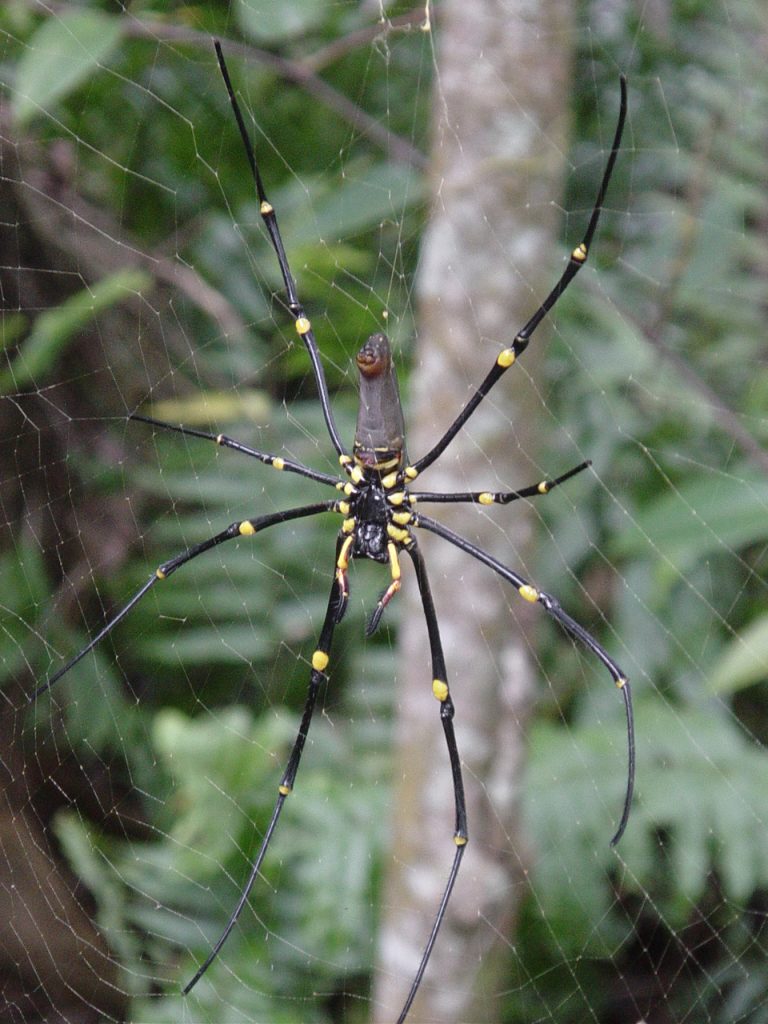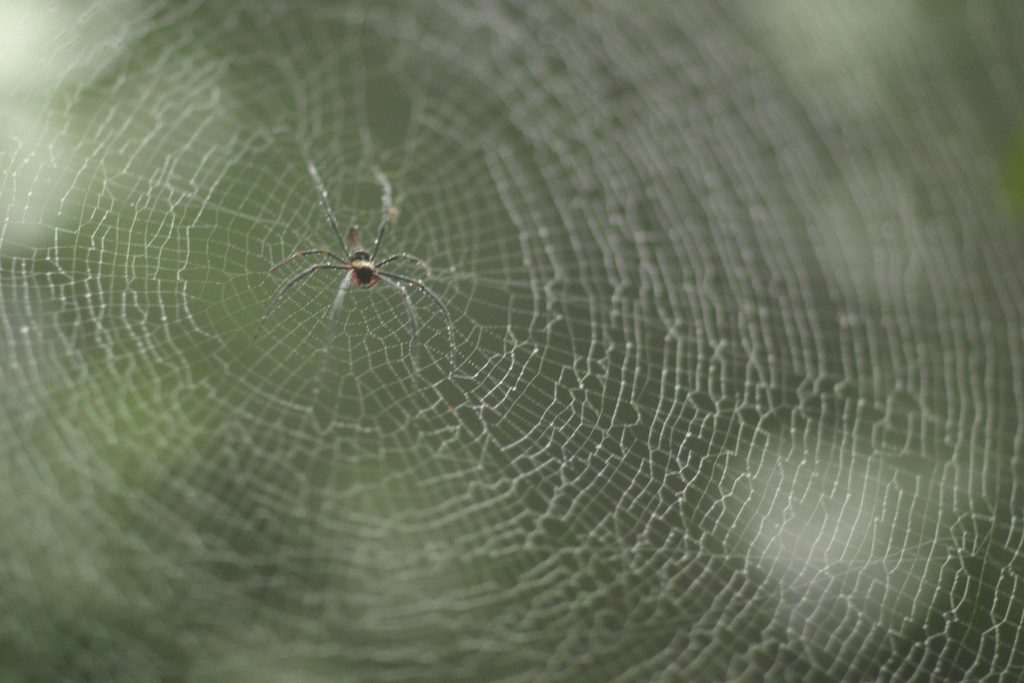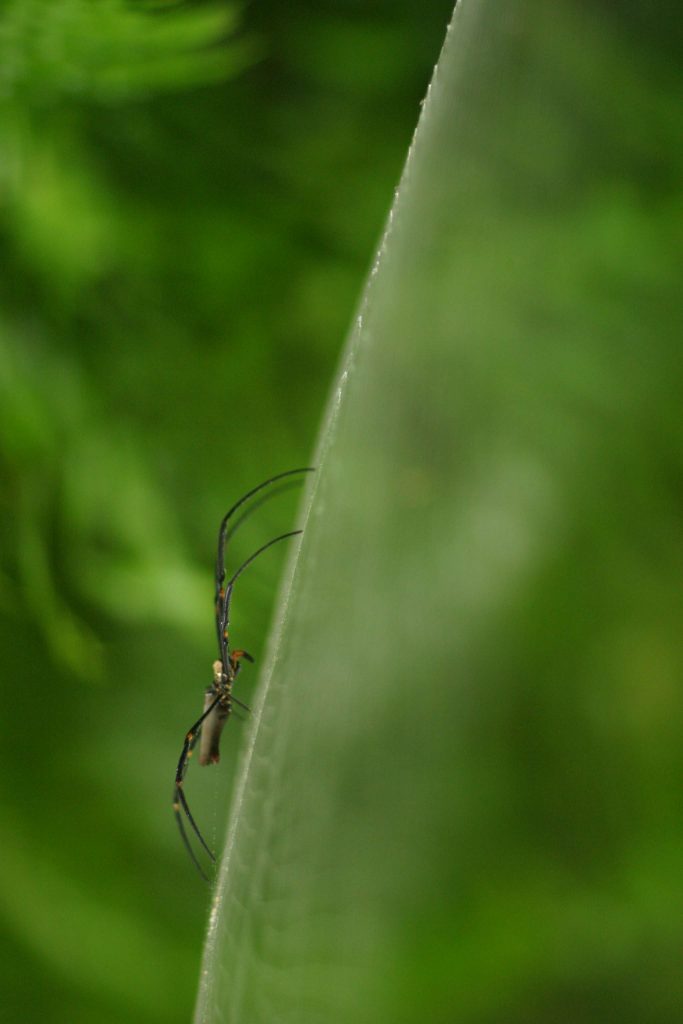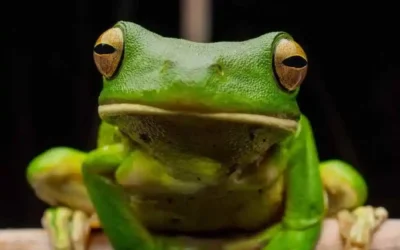The Golden Orb Spider
This month we will look at the Golden Orb spider (Nephila pilipes formally Nephila maculata), which makes one of the biggest and strongest webs in the world! Australia’s Tropical Rainforests are home to an amazing diversity of animal life, with each resident and species boasting its own interesting tale of evolution, survival and unique characteristics
The Golden Orb is found throughout the rainforests (and gardens) of Tropical North Queensland. Also known as the Giant Wood Spider, the Golden Orb can be found in other tropical climates around the world, including forests in Africa, India, China, Japan, parts of Southeast Asia the South Pacific and Papua New Guinea.

Golden Orb spider webs can measure in excess of 1 metre with support strands extending perhaps many more feet away and, unlike many other webs, they are not often dismantled and can last several years. The webs are usually built between tree trunks and branches, ensuring they are in the flight path of many insects which is the spiders’ preferred food source.
When seen in the sunlight, the webs are a golden colour, hence the name Golden Orb. Made of silk, these webs are strong enough to catch small birds and stop them in mid-flight (and are not very nice for humans to walk into either!).

In fact, research has revealed that the Golden Orbs’ web silk is as strong as Kevlar, which is the strongest known man made material. If humans could manufacture this spiders’ silk it would have a variety of uses, ranging from manufacturing materials for parachutes to bullet proof vests and seatbelts; it could even be used to make artificial tendons and ligaments.
The webs have been used by the indigenous peoples of many of the countries these spiders inhabit for hundreds of years. In Australia, the Aborigines used the webs as band-aides and sutures for wounds, while in the South Pacific the silk was used to make fishing lures, traps and nets.
The owners of these webs of steel are pretty sinister looking characters – probably not something you would like to bump into in the dark. The female can grow up to 20cm across (from toe to toe) with a body caprice of three to five centimetres. By comparison, the males can be up to 1,000 times smaller! Usually one female spider inhabits each web, which she can share with up to six or seven males.

Apparently the spiders themselves are edible as a protein supplement (although eating them is not recommended or encouraged) with differing reports as to the taste. Some say that the flavour is somewhat like mixed raw potato and lettuce, while others compare it to a nutty peanut butter-like flavour with a sticky consistency.
If you are visiting the rainforests and gardens of Tropical North Queensland this month, watch out for the Golden Orb spiders as it is now mating season and many new webs are being constructed as you read.
Skyrail Rainforest Cableway provides a unique opportunity to learn more about Australian Tropical Rainforests. Skyrail will take you on a journey over the rainforest canopy, with stops at Skyrail’s Red Peak and Barron Falls mid-stations providing the ideal vantage point to view the Golden Orb spiders’ creations.



